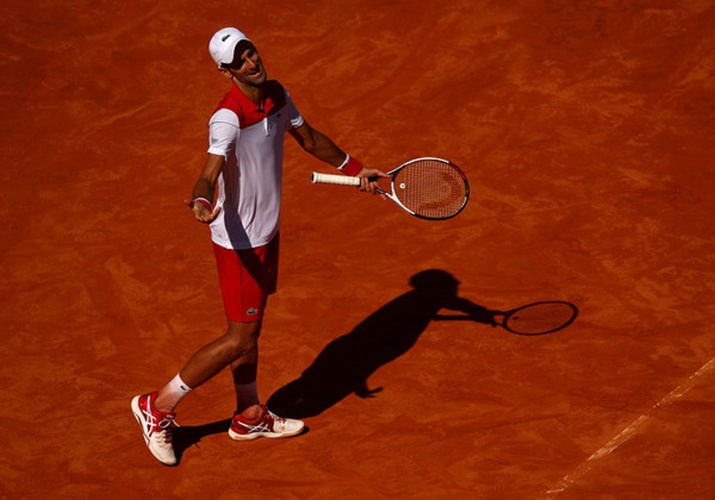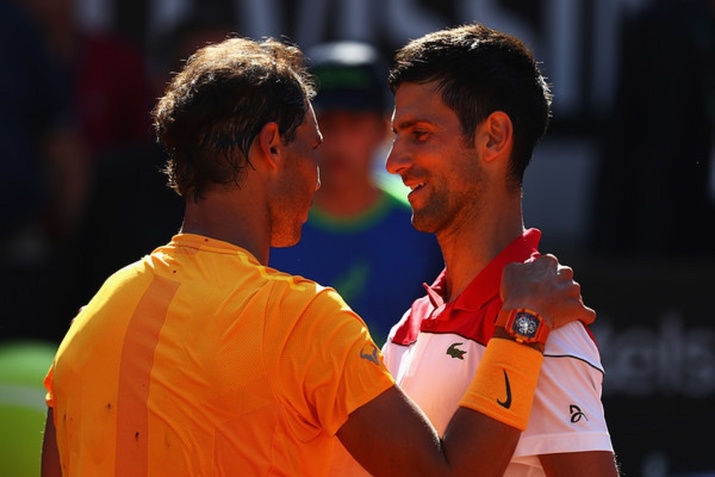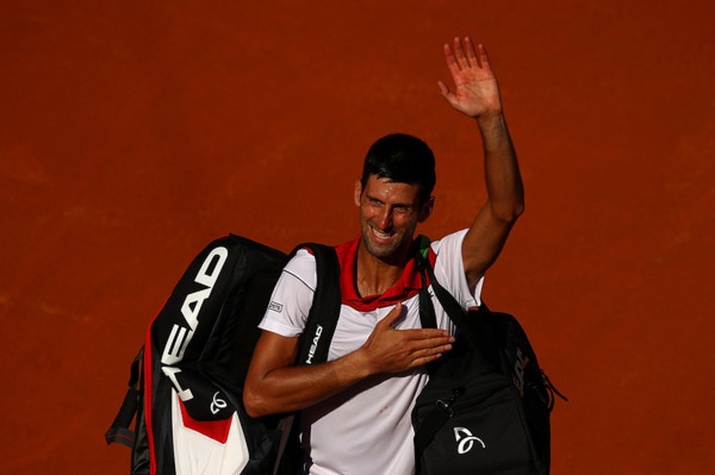Don't miss any stories → Follow Tennis View
FollowDid Djokovic's Game Turn A Corner In Rome?
There was a festival of notable conclusions to cherry-pick from Novak Djokovic’s belligerent 7-6 6-3 defeat to Rafael Nadal and the preceding run to the semi-finals of Rome on Saturday. The first was simply the familiar sight of the Serb, feet planted to the baseline, his shots finely tuned and hitting the spot, successfully going toe-to-toe with the greatest clay-courter of all time. There was the intensity between the two - that irresistible melding of breathless tennis and suffocating tension - that still hasn’t been replicated by any players in the years since they both faced each other at their best.
And then there was the rage.
It happened first against Nishikori in the quarterfinals, where the essence of Djokovic was unleashed in full on a cool spring night. Throughout the final set, Djokovic’s emotions veered to extremes. He was snapping impossible open-stance backhand winners at full slide, until he was suddenly imploring the crowd to their feet, until his face was suddenly contorted in rage and words were sent directly to his box. He was even more dramatic against Nadal. After an impossibly tense first set against Nadal, Djokovic walked to his seat, he stared at his team and unleashed hell.

For most other players in the history of sport, the sight of their eyes bulging, mouth spewing and face red with rage is a sight to regret. Anger is so often incompatible with the nature of competitive individual sport in general, but it is fatal in a sport like tennis that is defined by the ability to reset, to forget and to immediately move on to the following point.
One of the many ways in which Novak Djokovic is not like the others lies in how his indestructible resume has often been fashioned in the red-hot flames of anger. He seethes as intensely as many whose results are routinely overcome by emotions, but his ability to utilize the anger - either as an immediate release from the constraints of tension and stress, or else as the turbo-powered fuel behind his convictions - has lifted him to so many of the unearthly heights he has scaled throughout his career.
The past 18 months of Djokovic’s banishment from the top table has, in part, been summed up a reticence to emote. This is partly down to a palpable void of motivation, particularly in the clay season of 2017. The sight of him leaving the French Open with a bagel by his name, his mind anywhere but on-court against Dominic Thiem remains an unforgettable moment in his career.
But it has also been a seemingly deliberate ploy to change himself and not an entirely surprising one. There was always a disconnect between the meditative, statesmanlike Djokovic off-the-court, and the primitive emotions of Djokovic in the heat of battle.

A consequence was the sight of the Serb, his brother, Daniela Hantuchova and the famed “guru” tennis coach Pepe Imaz sitting on a podium, silently meditating for an hour with eyes closed. Djokovic suggested that his tennis needed to move further from the anger-driven emotions of old to further represent the meditative calm he exhibited off the court.
Thus, the defining moments of his matches, even when he was truly invested, were glossed with an artificial veneer of calm. Even as he seethed inside.
Djokovic’s run to the semi-final of Rome and the rediscovery of his emotions seem significant, but perhaps the greatest significance is that they will be yet another test of the validity of our eyesight; to further evaluate how much we can trust what our eyes are permitted to see when so much is obscured from view.
Djokovic’s entire 18 months of gloom have been a testament to this predicament. Based on the narratives that have followed every move he has made after Imaz, the Serb hasn’t really put a single step wrong.
His hiring of Andre Agassi and Radek Stepanek was hailed a year ago as a sure step on his return to the top, Agassi positioned as the man to take him back to the top. We were told that two like-minded people; on the court, two of the best baseline-huggers, returners and two-handed backhands in the game. Off the court, they were equally meditative and smart. It was a union too perfect to fail yet fail it did.

All the while, throughout 2017, Djokovic said everything was fine. Yet, since the turn of the year, Djokovic has spent much of his time essentially repudiating what he said in the past, stating he played matches that he shouldn’t have, that he made wrong decisions that led to his current predicament, that he allowed so many things to fester without addressing them.
“When everything goes well, you're fine, you know,” he explained this week. “There are things that are just accumulated because, you know, you were not addressing them at the right moment. And you think, you know, well, I won a match, everything's okay.”
“So, that's what happened with the injury, for example. You know, I didn't address it at the right time, and then it just got worse and worse to the point I had to stop and make surgery, and so forth.”
We can make the assumption that Djokovic, as he rages, rediscovers a decent level on the court and speaks more openly about his previous troubles, seems to be on the way back. But his experience has taught us that perhaps it isn’t wise to cherry pick conclusions and treat them as fact. When he takes to court in Paris, perhaps it’s just better to watch. (Photo Source: Dean Mouhtaropoulos/Getty Images Europe)










